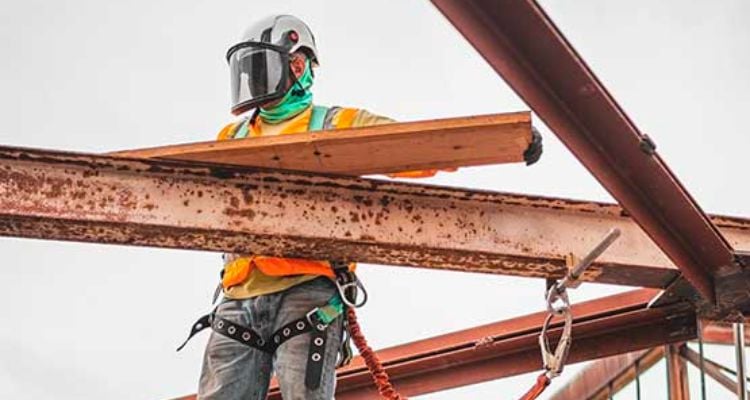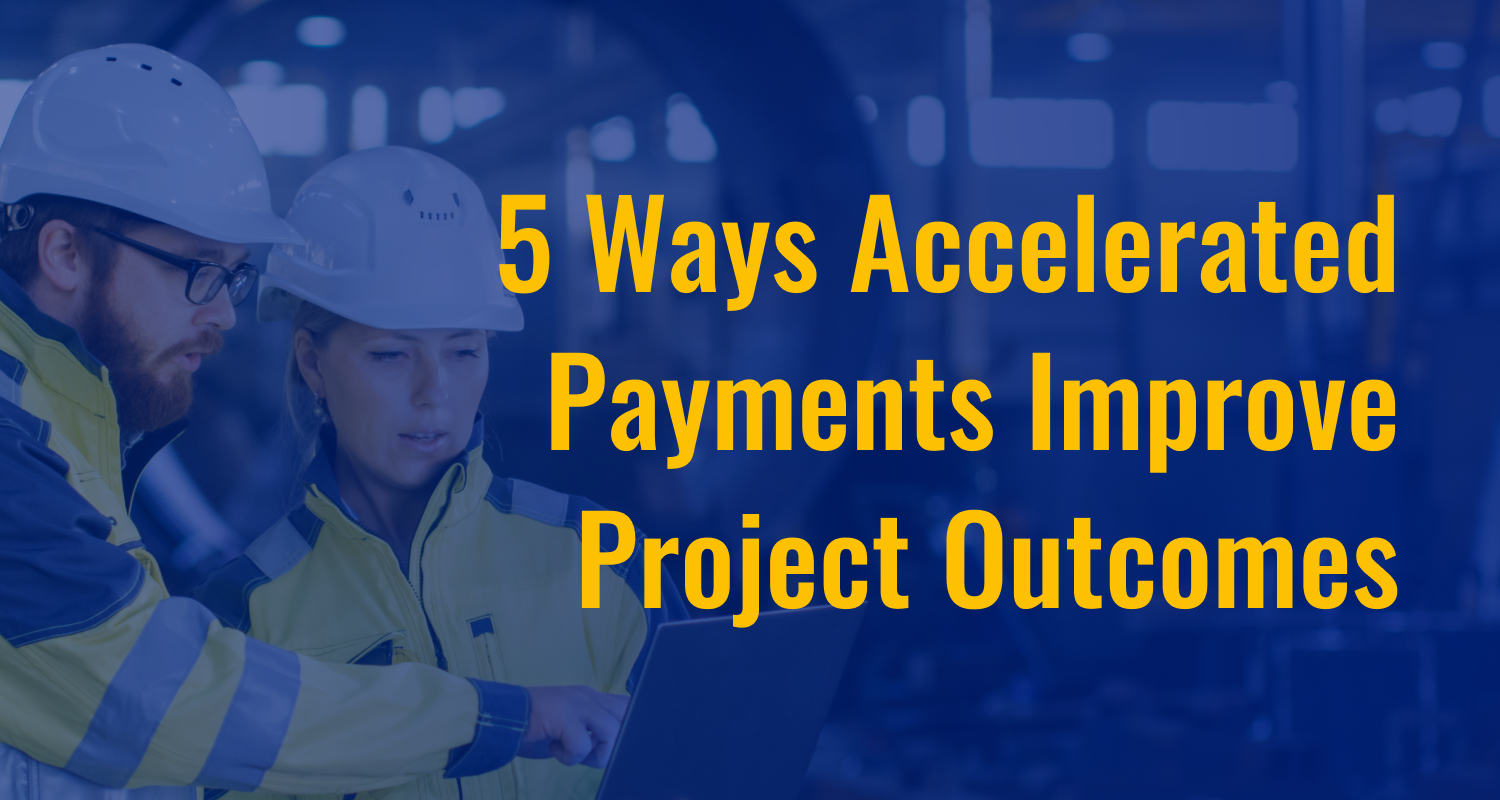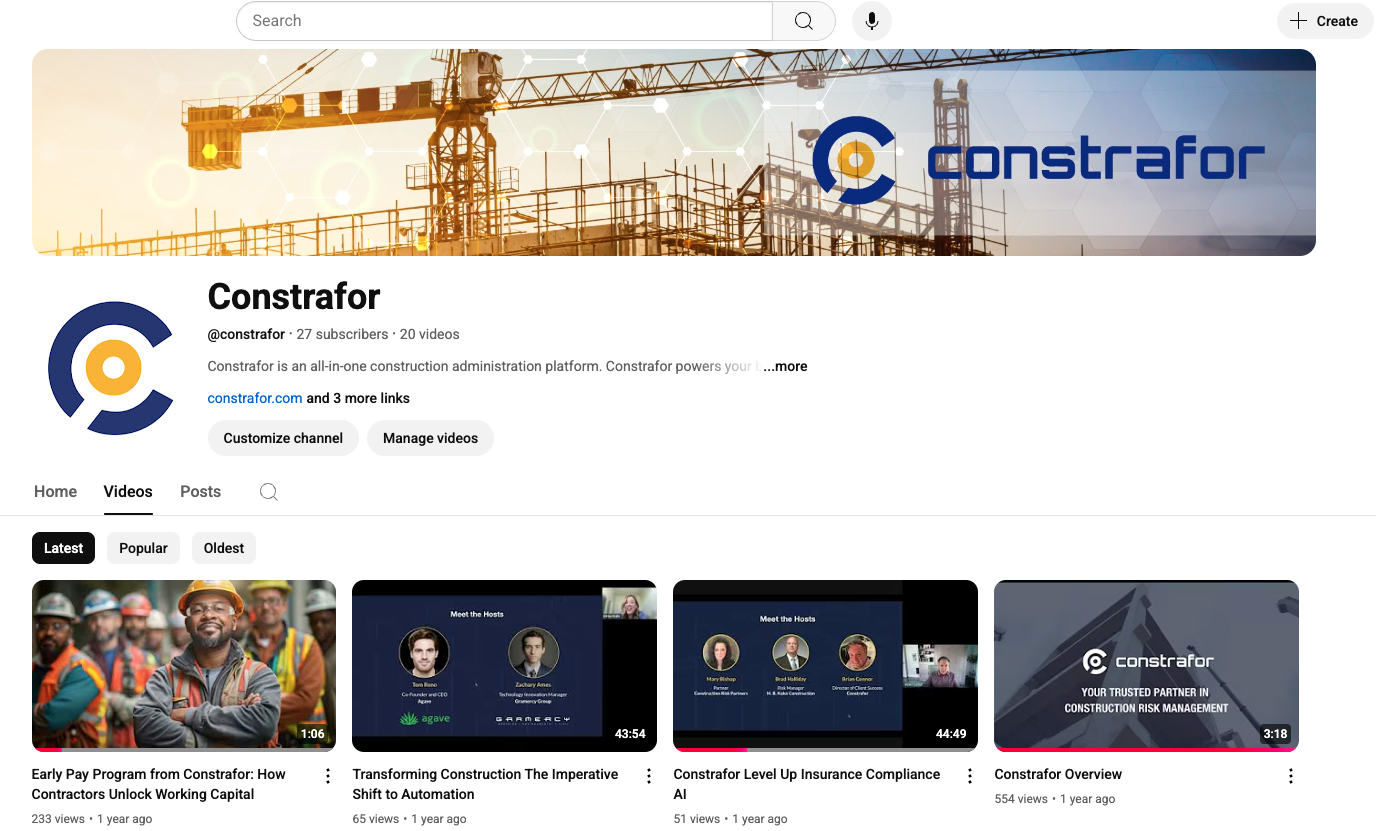1 min read
Constrafor Announces Integration with Procore
Constrafor Announces Integration with Procore New York, NY (April 6, 2021) – Constrafor, an innovative procurement platform for the construction...

A construction invoice or payment application provides an account of the work completed and materials provided through a certain time period – typically a month. It follows the work required by the contract, including any change orders, to determine the amount due. Supporting information is also usually required. Create a contractor invoice sample with the information below.
The standard invoice template follows AIA Document G702 for contractors and G702S for subcontractors and contains the following:
Supporting documentation typically, include but are not limited to: the schedule of values, lower-tier subcontractor invoices, and lien waivers.

Most construction contracts between contractors and their subs are based on a Pay-When-Paid term – meaning that the contractor will pay the subcontractor after receiving payment from the client for the respective invoice. Typically, the contract also gives the contractor a duration of 30 days to process the payment after receiving it from the client. This means that subcontractors wait an average of approximately 83 days to receive payment for their services, according to a recent study by PWC.
Payments for construction invoices have been historically processed using paper checks; that process has always encountered issues due to manual errors in writing the checks or having checks be lost in the mail.
With the advancement in technology and payment infrastructure, many companies are now opting to use electronic payment methods, such as wire transfers or ACH payments. Wire transfers are relatively expensive and incur fees on both the sender and receiver; thus, the preferred option for most businesses has been to establish ACH payment infrastructure. There are various benefits to using ACH payments, such as: speed, security, and cost. But it usually requires upfront coordination for exchanging bank account details.
Also, ACH transfers are typically disconnected from the accounting tools used in construction. Therefore, contractors would still have to manually match their invoices to their Accounts Payables and subcontractors would still manually check their bank accounts to verify their Accounts Receivables.
This disjointed process can become particularly cumbersome for larger subcontractors and contractors as they work on multiple projects in parallel – and that’s where state-of-the-art A/R and A/P tools have tried to capture these flows. As of the date of this article publishing, only ConstraforPayTM goes the extra mile to connect these payments and accounting ledgers to the corresponding projects, and does so without requiring subcontractors and contractors to exchange their routing and account numbers beforehand.
With ConstraforPay, you can set up your account and send/receive payments in minutes!
Constrafor’s payment portal allows you to set up your account, authenticate with your bank, and send or receive payments – all under 10 minutes!
Our product encompasses the full construction invoicing lifecycle and is used by both contractors and subcontractors. Start by uploading an invoice, going through the approval process, and then processing payments. You can also view all your invoices and payments in our simple and interactive dashboards. ConstraforPay also integrates with your existing ERP accounting system, allowing your books to always be up to date!
The Early Pay Program (EPP)is designed to accelerate payments for subcontractors, allowing them to get paid faster for GC-approved invoices. This helps to avoid costly debt and improve cash flow. The process is straightforward:
The EPP is particularly beneficial for subcontractors or specialty contractors who are looking to strengthen their company’s cash flow. This could be to take on more projects, finance mobilization costs for new projects, purchase material and equipment, cover payroll, or pay down high-interest debt.
The EPP is a construction-first financing solution that allows subcontractors to free up working capital to grow their business without adding debt or giving up equity. It's quick and easy to apply, and subcontractors can choose which invoices to finance. The cost is known upfront – there are no hidden fees, and no long-term interest. This minimizes rate and ensures reliable and secure payment every time.
A case study is provided on the page, where Mary Grubbs, CEO and President of LJS Waterproofing, shares her experience with Constrafor's EPP and how it positively impacted her cash flow.
Historically, subcontractors have tried to manage this uncertainty with spreadsheets and manual check-ins. Payments, whether by check or ACH, were often disconnected from accounting systems, forcing you to spend hours manually reconciling what you're owed (A/R) against what you owe (A/P).
This disjointed process is reactive. You're always looking backward, trying to piece together what happened.
This is where Constrafor’s Cru changes the game. Cru is an intelligent CFO suite designed to be your financial co-pilot. Instead of just tracking transactions, Cru helps you look forward. It connects to your existing systems and uses AI to give you a clear, proactive view of your financial health.
With Cru, you can move from reacting to cash crunches to strategically planning for growth. It helps you answer the most important questions:
What is my true cash position right now, across all projects? Cru’s Cash Flow Forecasting visualizes your historical cash flow and provides data-driven projections, so you're never guessing.
Are we being overcharged by a supplier? Cru’s AI-Powered Bill Processing doesn't just digitize your payables; it analyzes them, flagging potential overcharges and inconsistencies before you pay.
Which projects are most profitable, and where are we leaking margin? Cru provides Project-Level Forecasting and Job Costing, breaking down cash flow and expenses by project so you can protect your profits.
To learn more about how Constrafor can improve your construction back-office, schedule time with an expert here.


1 min read
Constrafor Announces Integration with Procore New York, NY (April 6, 2021) – Constrafor, an innovative procurement platform for the construction...

Strong relationships between General Contractors and trade partners can help create a mutually beneficial and productive partnership, ensuring the...

In the construction industry, your job to build incredible things from the ground up. You transform blueprints into buildings, turning vision into...